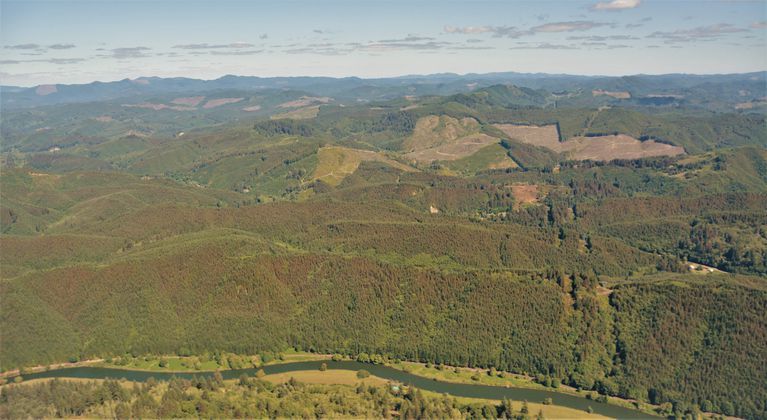Deforestation and Forest Degradation Are Making Heat Waves and Drought More Intense. Evidence from The Pacific Northwest Heat Dome
Christopher Still and John Talberth • March 30, 2022

It’s no secret that landscapes dominated by clearcuts, logging roads, and timber plantations pose significant public health and safety risks by amplifying the effects of heat waves, drought, water shortages, wildfires, landslides, floods, invasive species and other stressors already on the rise due to climate change. The pool of research documenting these effects is robust, and growing.
Recently, CSE teamed up with Dr. Christopher Still at Oregon State University to add to that body of research by comparing and contrasting the effects of the unprecedented 2021 Pacific Northwest heat wave on undisturbed, old growth forest vs. heavily clearcut and degraded forestlands near Cougar Reservoir in Oregon’s central Cascades and in southwest Washington. The technical report is now available and can be viewed and downloaded here. Key findings include:
- The loss and degradation of primary forests is driving climate change and amplifying the severity of heat waves and droughts.
- The unprecedented Pacific Northwest heat dome of 2021 provides an opportunity to compare and contrast the climatic responses of undisturbed primary forests to deforested and degraded lands.
- Using NASA’s Visible Infrared Imaging Radiometer Suite (VIIRS) data, land surface temperatures of undisturbed vs. deforested and degraded forestlands in western Oregon were compared before, during and after the heat dome event.
- In two contrasting sites in southwest Washington, tower data from the National Ecological Observatory Network (NEON) was used to compare canopy temperatures, ecosystem fluxes of water, net ecosystem carbon exchange, and ecosystem photosynthesis.
- At the western Oregon region of interest, the mean, maximum, and minimum land surface temperature was always higher on the deforested and degraded lands. During the heat dome event, the undisturbed forest was 5.5 ºC cooler ( 94.8 ºF vs. 104.7 ºF).
- At the NEON sites in Washington and relative to the undisturbed old growth forest, the degraded (plantation) site was hotter (~4.5 ºC), lost more water, was less efficient at photosynthesis, and experienced a more dramatic impact to carbon cycling, flipping from a sink to a source during the heat dome event.
- The results suggest that as heat and drought intensify with climate change, maintaining the extent of undisturbed forest and reducing the extent of deforested and degraded lands may be important for mitigating the effects of heat waves, conserving water supplies, and reducing wildfire risk.
This technical report will be split into two papers for peer reviewed journals and likely published in the fall. In the meantime, CSE will continue to work with legislators and county commissions in Oregon and Washington to advocate for changes in forest practices and comprehensive land use plans to better protect nearby communities from these growing public health and safety threats. Stay tuned for updates on this work.
Read:


